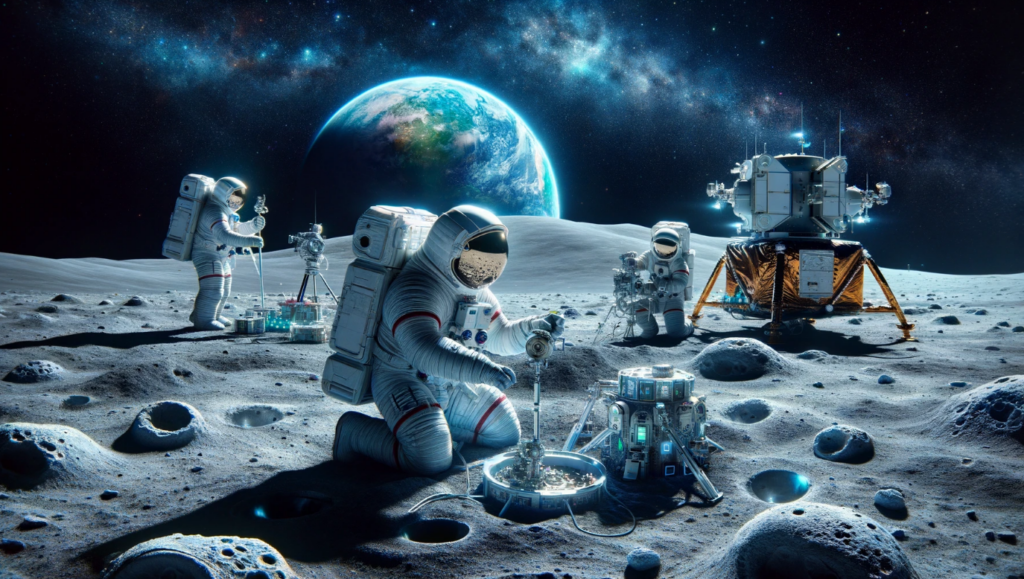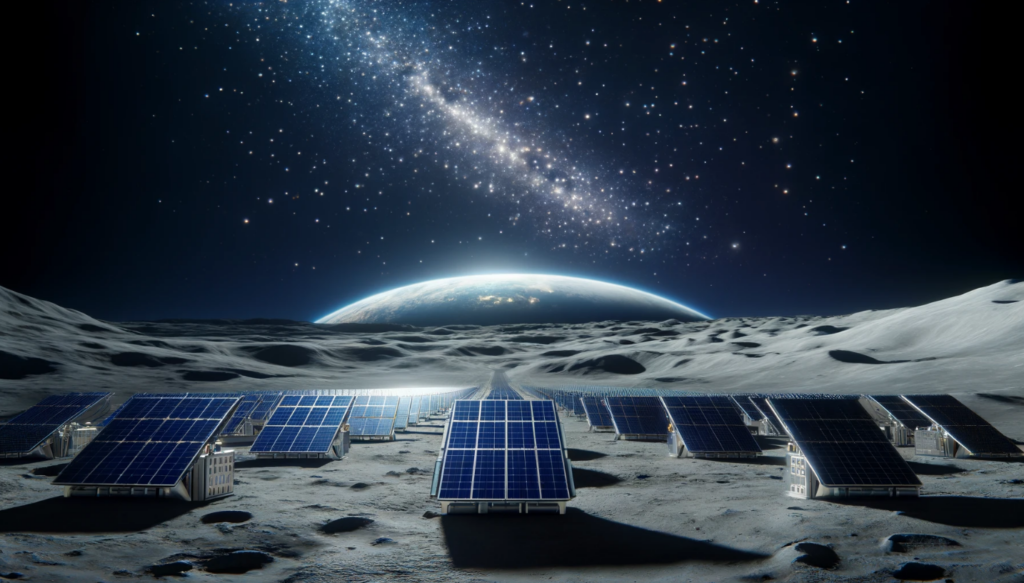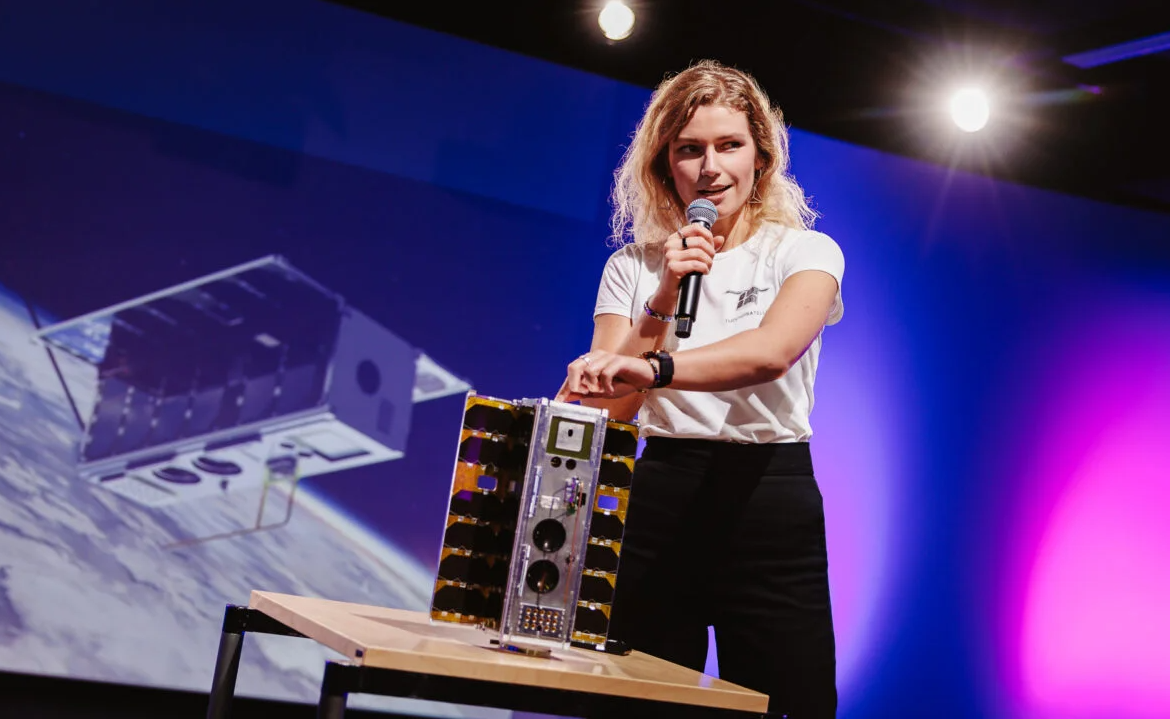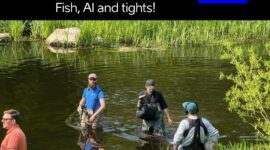Table of Contents
TalTech PhD student and lover of all things space Katriin Kristmann spends a lot of her time in the university’s photovoltaic materials laboratory, where her thesis on solar panels that can be made from materials found on the Moon is taking shape. She also chairs the management board of the Estonian Student Satellite Foundation, which develops satellites and space technology. So lets take a closer look, how close are we putting a solar park on the moon?
A doctoral thesis on colonising the Moon
Katriin’s PhD thesis is directly linked to technology that could be put to use on the Moon. She hopes that establishing a permanent settlement on the Moon will become possible within the next few decades, as this could also serve as a pit-stop or refuelling station for those travelling on to more distant planets. Katriin’s thesis could ultimately contribute to the Artemis project of the European Space Agency and NASA.
Artemis comprises a number of projects, the third of which will hopefully send a human to the Moon in 2026. A flight around Earth’s only major satellite should take place one year earlier to test the ability of the Orion spacecraft to carry a four-person crew into space and safely return them. If the third Artemis mission takes the crew to the Moon for a week, it will be the first time in half a century that humans have set foot on its surface.

The crew’s destination is the lunar south pole, where conditions are harsh: the sun is close to the horizon and temperatures can reach as high as 54 degrees during periods of light. Regardless of the light, peaks cast dark shadows across the lunar surface, concealing eternal darkness. Some craters on the Moon have most probably seen no light in billions of years, and temperatures there can drop to -200.
Four astronauts will brave such conditions to take photos, record videos, collect samples, study the satellite’s geology and gather data for scientific research. Due to the long, dark shadows, the lunar south pole looks entirely different from the locations visited by the Apollo missions.
Katriin is researching how energy could be generated on a future lunar base so that it is able to operate and grow without relying on resources from Earth. Energy is crucial for creating infrastructure on the Moon. “People need electricity for everything, and if we want to operate sustainably on the Moon, we have to produce it from resources available on-site, since there are no fossil fuels or wind there,” she explains.

Her thesis focuses on making solar panels from materials found on the Moon. She says the first step would be to mine a material that covers its surface called regolith, which is formed from rocks crumbling (and, on Earth, from vegetation growth). The surface of the Moon is almost entirely covered by regolith because it has been bombarded by countless meteorites over time, resulting in a ‘blanket’ of dust and rocks that coats the celestial body. The extracted material would then have to be separated from the elements needed for the solar panels: in this case iron and sulphur, or iron sulphide and sulphur. These would be used to grow tiny pyrite (FeS2) microcrystals measuring just 50 microns thick, or one-third the thickness of a single human hair. These microcrystals would then be used to make monolayer solar panels within the lunar base itself, ensuring its independence from Earth.
“While humans might be returning to the Moon as soon as 2026, establishing a base there could easily take another 5 to 10 years,”
NASA’s goals go beyond colonising the satellite. Artemis is a step towards reaching Mars, and further missions should follow in the coming decades. Reaching Mars entails a long mission, lasting nearly three years, with no chance of an early return. Former NASA astronaut Steven Swanson told How Stuff Works last year: “The journey to Mars will take seven to eight months, after which there’ll be 15 months on the Red Planet before everything aligns in the solar system again for the return journey.”
An ‘ah-ha!’ moment at the AHHAA Science Centre
Katriin says she has been interested in space since taking a gap year after her Bachelor’s degree and working in the planetarium at the AHHAA Science Centre in Tartu. “At some point I had this ‘ah-ha!’ moment and realised I wanted to work in the field of space, although that seemed impossible at the time,” she says. “Now I’ve created the conditions to make it possible for myself.”
She says Estonia has plenty of opportunities to develop as a spacefaring nation. She finds the cosmos endlessly fascinating, and her goal is to boost the field of space science in Estonia. Katriin is completing her thesis in collaboration with the European Space Agency, which she occasionally visits in order to test her materials. “Anyone interested in finding out more can listen to the three-minute lecture I gave at the Estonian Academy of Sciences which earned me the win in this year’s competition,” she adds.
She also promotes space through the Student Satellite Foundation, which aims to provide students with practical experience of working on a variety of space technology projects while also increasing the number of high-level specialists in Estonia. It also seeks to revitalise the field of space by producing specialists and entrepreneurs who, after graduating and gaining practical experience, will be able to achieve their objectives and even conquer the cosmos.
In chairing the foundation’s management board, Katriin is responsible for ensuring that all of the different teams, including the project’s engineers, run smoothly and have everything they need to develop the satellite. She also handles partnerships and funding, assists with recruitment, and occasionally represents the project for PR purposes.
Katriin has vivid memories of summer 2022 when she organised the Cosmos Festival with the Student Satellite team at Telliskivi Creative City. Matthias Maurer, an astronaut from the European Space Agency, spoke at the event just weeks after returning from the International Space Station. “Matthias is also a materials scientist, so meeting him was really exciting,” Katriin says.

The student satellite taking us closer to space
Katriin explains that training the next generation of engineers on the Student Satellite project is the first step towards boosting the number of specialists and developing the field of space in Estonia. “I’ve been involved in Student Satellite for two and a half years now, even before it became part of TalTech,” she says. “At the time, our main project was ESTCube-2. After I started my PhD studies at TalTech, I quietly devised a plan to bring space closer to my university.”
In 2023, students from TalTech and the University of Tartu decided to collaborate on the development of the next satellite and realised that the Student Satellite Foundation would be the ideal base for the project. Katriin soon became the chair of the management board at the foundation and the person to contact regarding space and space-related engineering projects.
“Our projects, which have all been about satellites so far but could change in the future, always have a scientific and technological goal,” she explains. “We want to contribute to humanity’s exploration of space by testing new technologies in orbit and conducting scientific experiments. For example, our SUTS satellite bears three major technical loads: encrypted optical communication, a high-speed object camera and a solar panel made from lunar regolith.”
Katriin urges others to get involved: “If there are any companies out there that share our values and would like to support us on this journey, please contact us at info@tudengisatelliit.ee.”
This article was originally published on the webpage of Tallinn University of Technology (TalTech) in their publication TRIALOOG. Author: Liisu Kirke Normak.
Read more from our webpage about how Estonia has been a pave maker in the Space studies.
 Back
Back



